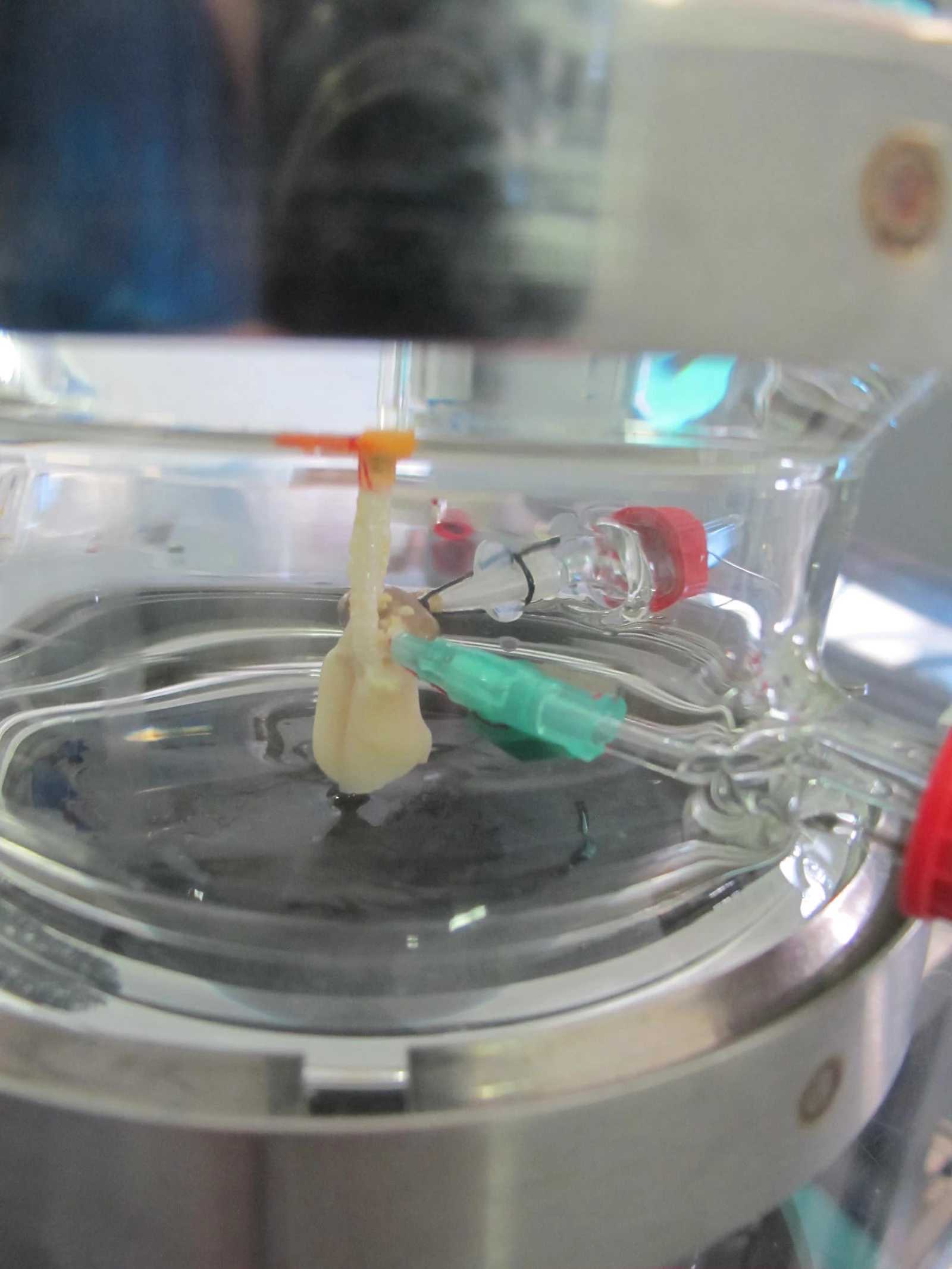Researchers at the Fraunhofer Institute for Interfacial Engineering and Biotechnology in Germany have created a miniature artificial lung that has the potential to significantly improve the process of developing treatments for lung cancer. In addition to the possibility of replacing animal trials currently used to test new medications, the "3D-lung" could be used to expand our understanding of how lung cancer spreads to the rest of the body.
With a volume of just half a cubic centimeter, the mini-lung has is made up of human lung cancer cells growing on tissue and is attached to a bioreactor that makes it "breathe" by pumping a nutrient medium through its blood vessels. The model is therefore able to react to medication the same as real human patients.
“We’ve developed an innovative 3D test system that allows us to superbly simulate what happens in the human body," says Professor Dr. Heike Walles of the Regenerative Technologies for Oncology project group responsible for the model. "Animal models may be the best we have at the moment, but all the same, 75 percent of the drugs deemed beneficial when tested on animals fail when used to treat humans.”
Walles reports that "treatments that generate resistance in clinics do the same in our model" and it's hoped that unique, individual test-lungs for each patient may be created in the future. At the moment, the single model is able to run tests based on cells collected during the same biopsy required for any other doctor to analyze a patient’s cancerous tumor.
The model is also able to regulate how fast and how deeply the lung breathes, and may be used to help further research on metastases.
Metastases is the spread of a cancer from one part of the body to another non-adjacent part of the body. Previous research was only ever allowed on animals (which work differently from humans in this area) or on a 2D-plane. Having a 3D model will potentially grow our understanding of metastases exponentially.
The research will be presented to the public for the first time at the BIO International Convention in San Diego, California, on June 23.
Source: Fraunhofer




